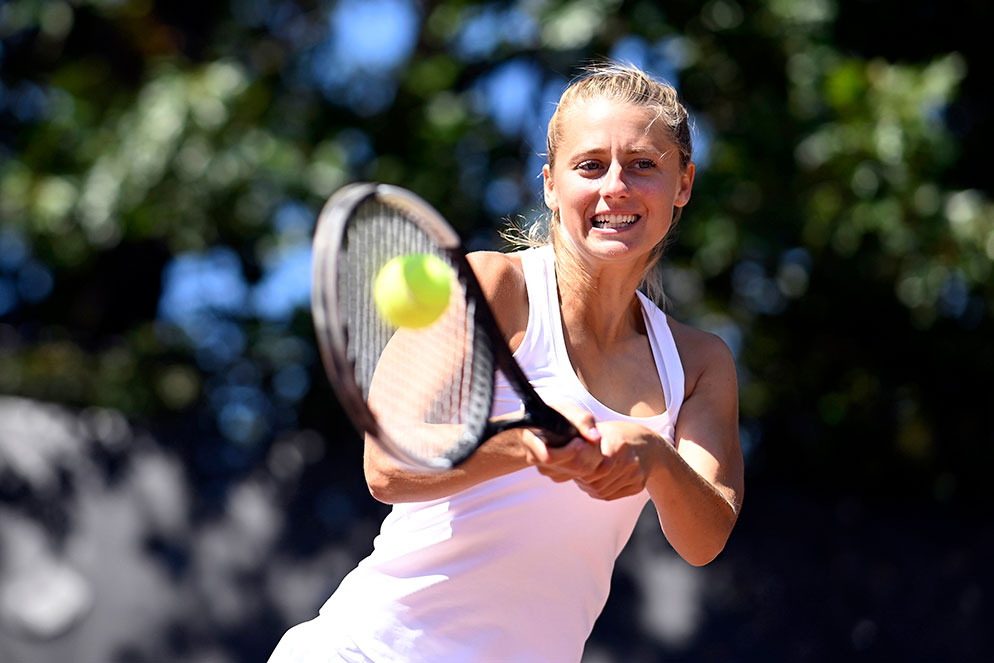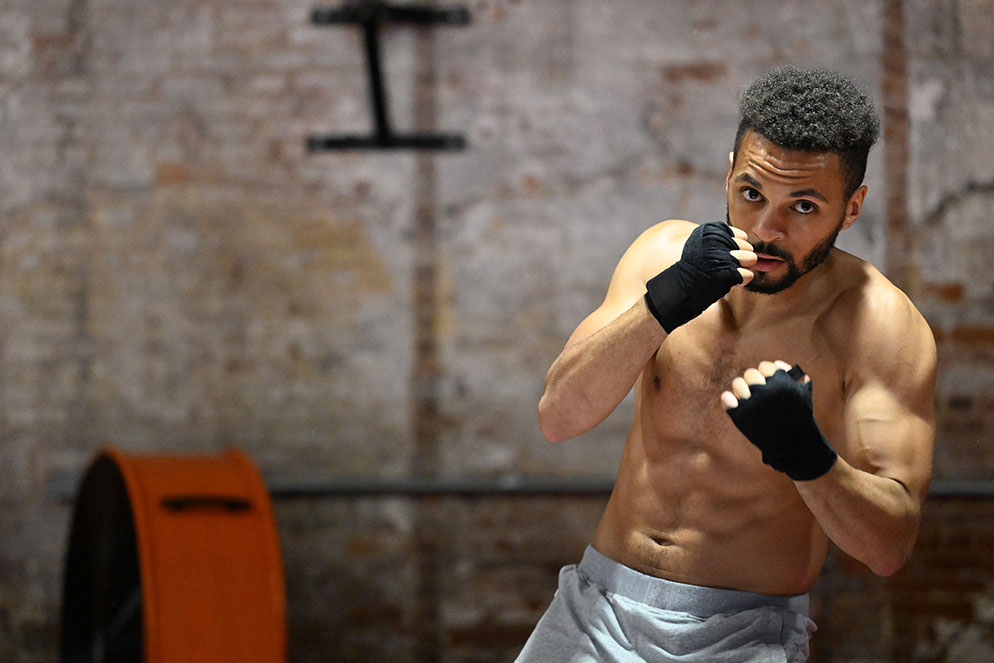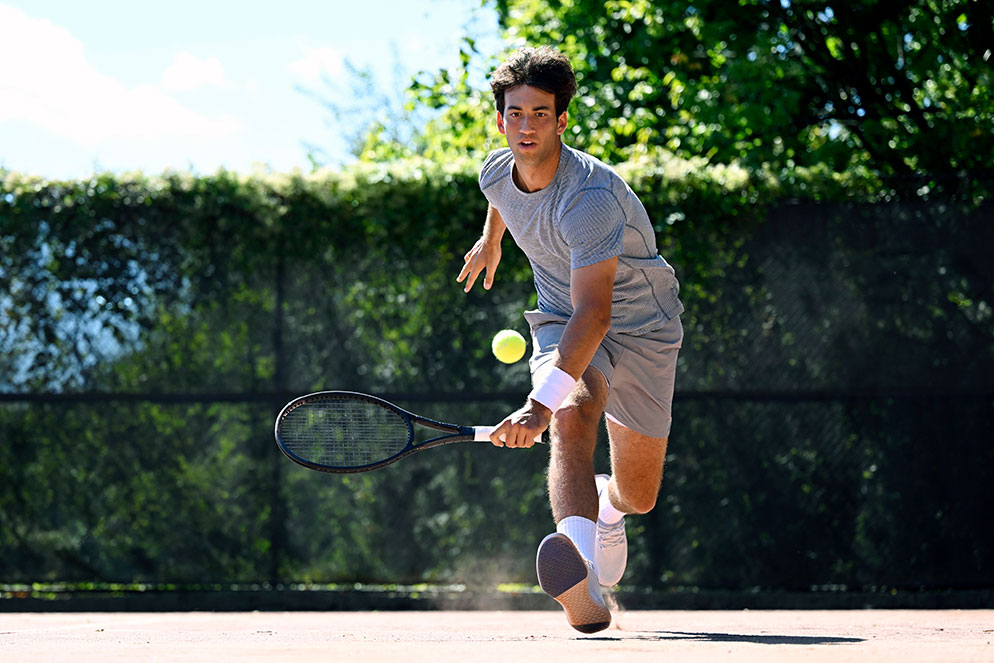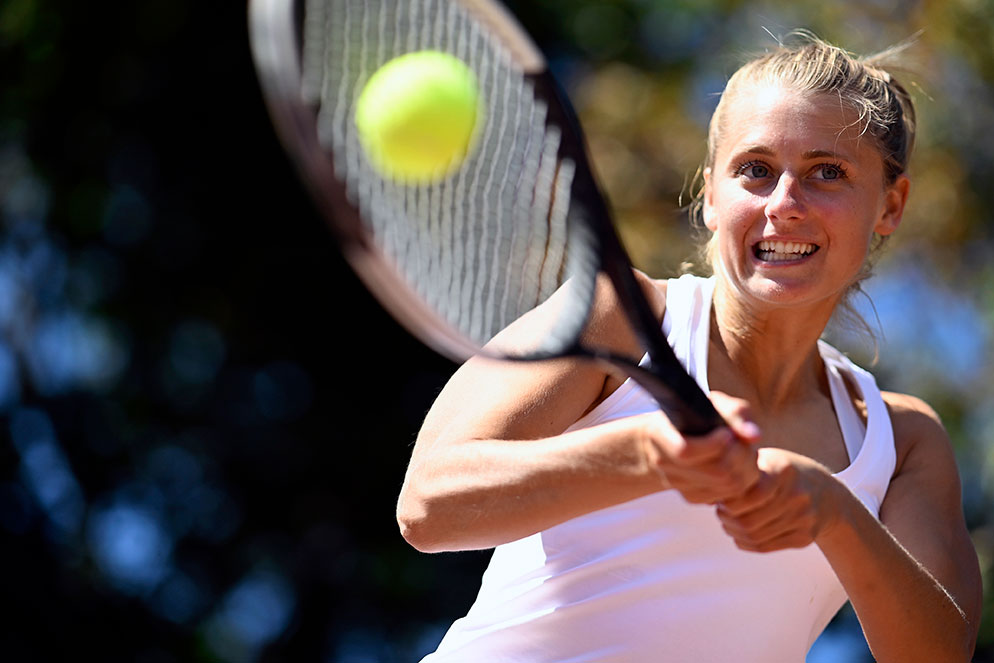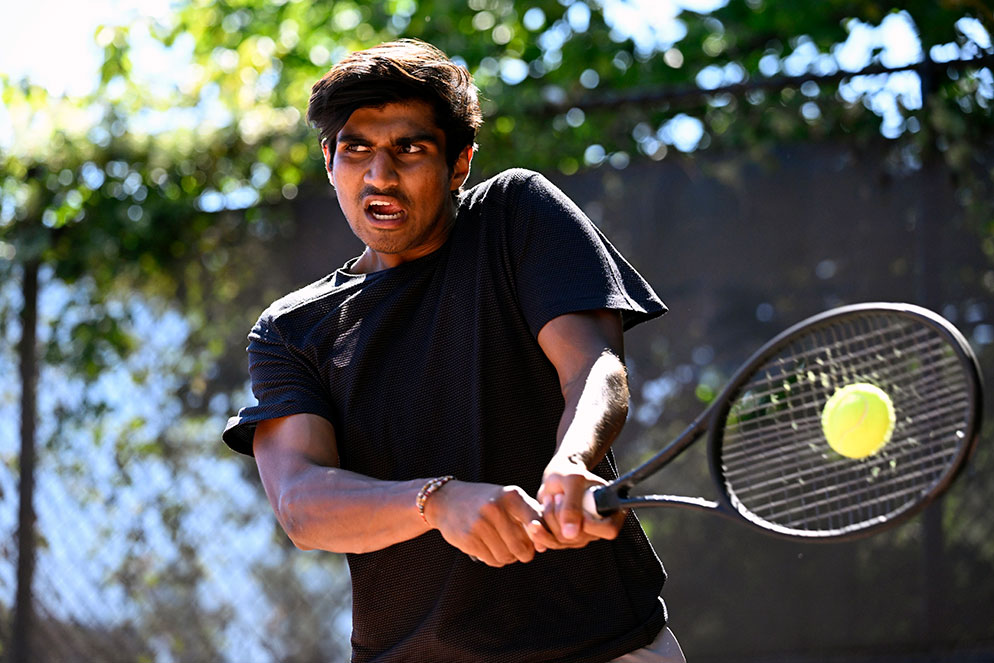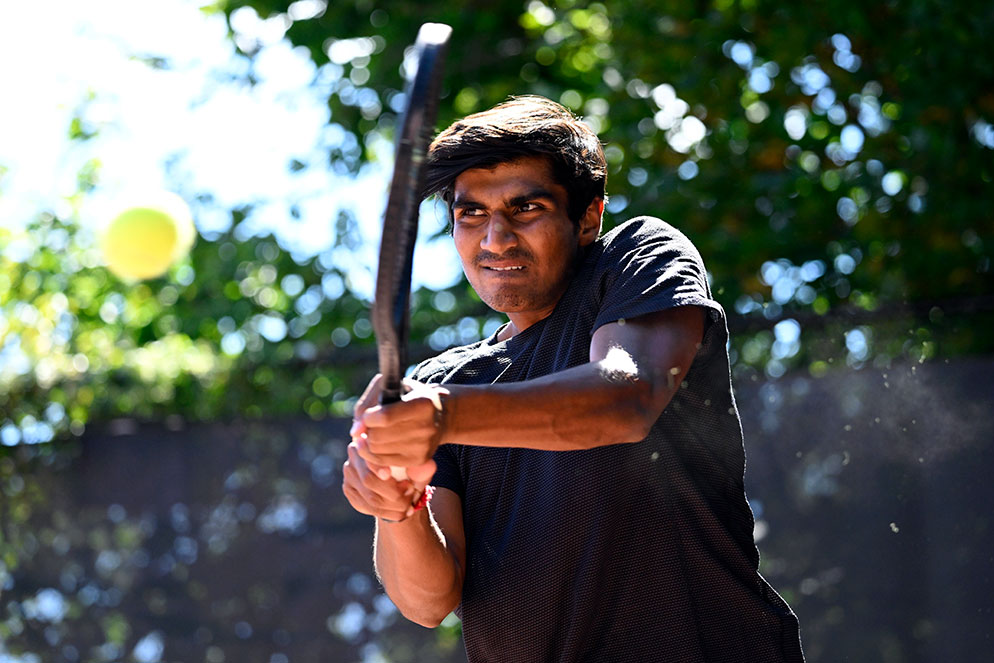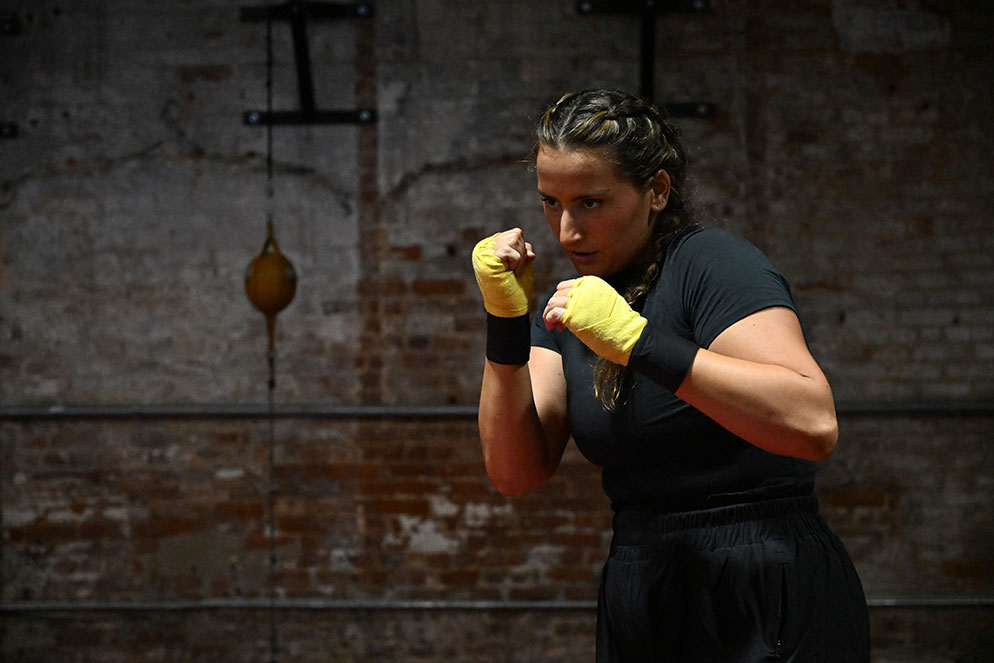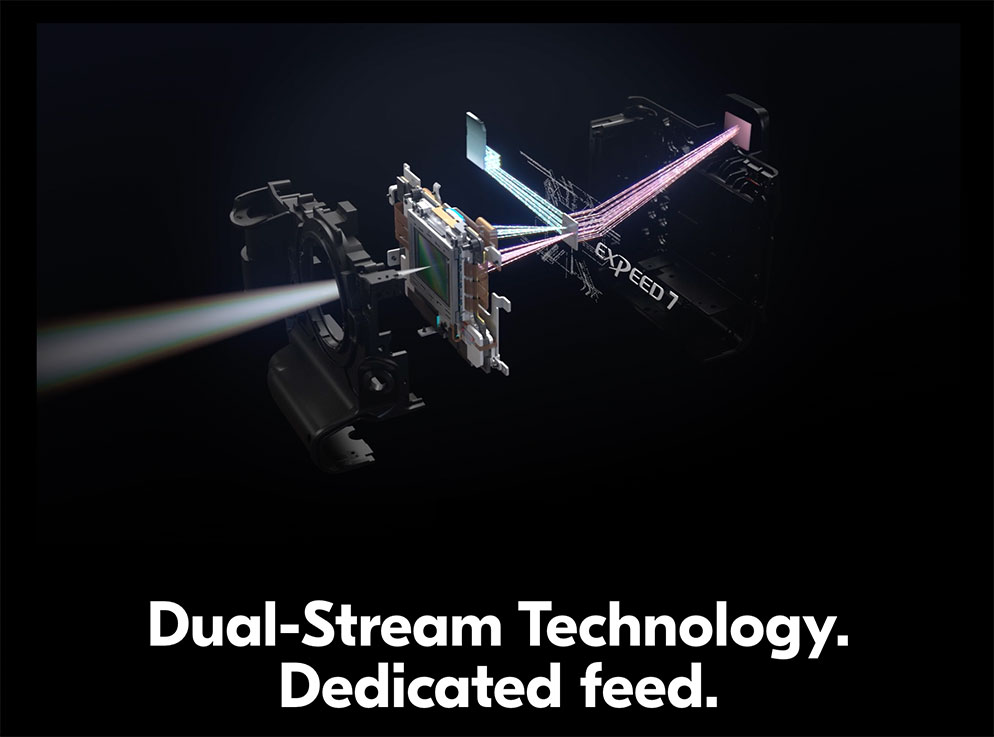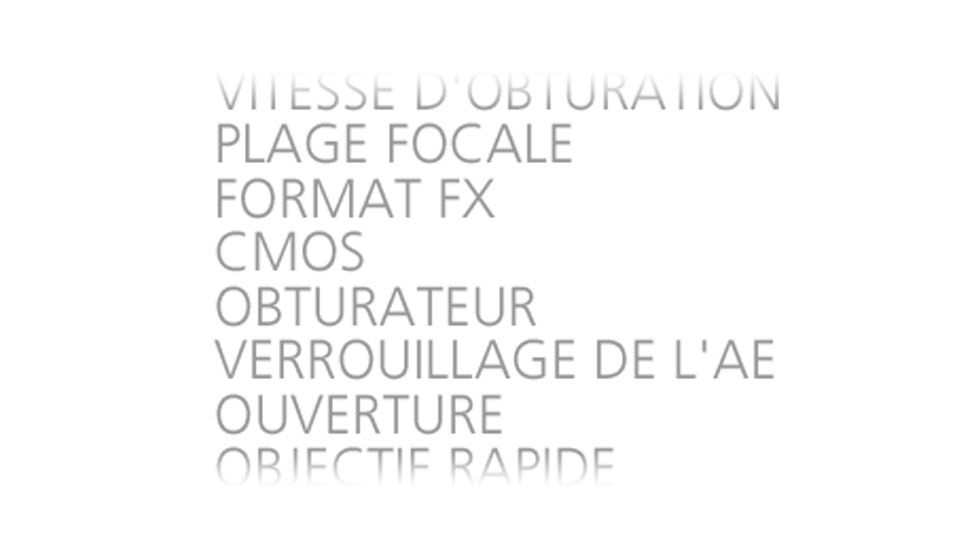Game On: The Z 9 Meets the Challenges of Sports Photography
The Z 9’s low-light ISO capability was “unlike anything I’ve ever used before, and it makes you want to push what you can do.” Eye AF tracked the boxer at 20 fps as he moved, weaving and bobbing, even as his hands often came up in front of his face. Z 9, NIKKOR Z 70-200mm f/2.8 VR S, 1/1000 second, f/2.8, ISO 12,800, manual exposure, Matrix metering.
Let’s get right to the point, and the point is…gaffer’s tape.
It’s not the main point, but when we asked commercial photographer Jennifer Pottheiser how the Z 9 would affect her photography, she responded with a quite specific, totally unexpected and sublimely appropriate example: “In a studio shoot it’s not uncommon to put a piece of gaffer’s tape down and say to a subject, who might be a pro athlete, or a dancer, or just a creative human being who wants to move around, ‘You have to stay on this little piece of tape because that’s my focus zone.’ Well, with the Z 9, that’s over.”
So, confidence in the camera means freedom for both the photographer and the subject to push former limitations completely out of the way.
Jen was lying on her stomach, below the net—"something I’ve never had the confidence to do before. He was running at me, full speed, and I got 120 frames per second with his eyes, the ball, the racket, the bottom of the sneaker and even the little puff of clay dust in focus.” Z 9, NIKKOR Z 70-200mm f/2.8 VR S, 1/4000 second, f/2.8, ISO 640, manual exposure, Matrix metering.
In Action
“Let’s start with the tennis shoot,” Jen says, picking up the thread of our conversation by citing an example from her specialty, the world of sports photography. “On the court, once I saw how good the Eye AF tracking was, I was like, ‘Well, let’s see what kind of position I can contort myself into to get an angle I would otherwise never have the confidence to try.’ So I’m using a prime lens, wide open, lying on my stomach, then on my back—things I would never have considered previously.”
And even if she had considered them, she likely would have passed them up and moved on to familiar ways of nailing the hero shot. “Because so often when you’re working with professional athletes, time is limited, budgets are tight and everyone on set wants to make sure they get what they need. Your camera has to perform on every frame. The Z 9 does that—it performs on every single frame, locking on and keeping focus no matter what.”
Prior to her shoot with the Z 9, Jen’s go-to camera was her D6—“an amazing piece of equipment”—but what she found with the Z 9 was “a sense of freedom in working with a camera that makes your life so much easier. The Z 9’s autofocus is unlike anything I have previously experienced, and from there, the way you shoot changes, the things that you are willing to push yourself to do change. You think differently when you have that level of confidence. The 3D tracking with subject detection is “can’t miss, spot on”, so when you have a creative director looking at your screen as the pictures are coming in, and everything’s sharp, everything’s money, and when you know that’s going to happen, you just play your hand differently because your safety net is much larger.”
“The 105mm is known as a terrific portrait lens, not usually a sports lens, and here it was me thinking, Let’s see what the fall-off is going to be at f/2 and how a soft background will look on an action shot. The shot worked, so then I changed position to see how I could make it a better shot.” Z 9, Mount Adapter FTZ II, AF-S NIKKOR 105mm f/1.4E ED, 1/10,000 second, f/2, ISO 500, manual exposure, Matrix metering.
“I moved in and got this lying on my back, shooting 30 frames a second as she’s slamming the ball, and every single frame is tack sharp.” Z 9, Mount Adapter FTZ II, AF-S NIKKOR 105mm f/1.4E ED, 1/10,000 second, f/2, ISO 500, manual exposure, Matrix metering.
The Z 9 performs on every single frame, locking on and keeping focus no matter what.
“In previous situations, with an athlete in a black shirt and a chain-link fence in the background, the AF might jump to something else other than his eye, but not with the Z 9, which stayed locked on for the entire 30-fps sequence and showed you that at the moment of impact he was already looking where the ball was going to go.” Z 9, NIKKOR Z 100-400mm f/4.5-5.6 VR S, 1/2500 second, f/4.8, ISO 2500, manual exposure, Matrix metering.
“As the racket came across the focus point, coming between the camera and his eye, the focus stayed with the eye; it did not jump to the racket. Even the distracting lines of light behind him had no effect.” Z 9, NIKKOR Z 100-400mm f/4.5-5.6 VR S, 1/2500 second, f/4.8, ISO 2500, manual exposure, Matrix metering.
Quick and Quiet
In her first shoot with the Z 9, Jen checked out all the frame-rate choices—20, 30 and 120 frames per second—with an eye to getting an extra benefit out of the top speed. “Being able to shoot at 120 fps is going to be good for social media,” she says. “I’ve been making GIFs out of 120-fps sequences, and it feels like you’re looking at a movie or a flip book. Now there will be still photos that will have life in other places and I’m thinking some clients are going to be thrilled because they’re getting much more value out of a shoot. They hire me for the stills, but to be able to have these additional assets that highlight their products, that’s a bonus.”
The Z 9’s silent shutter capability is also going to make a difference in her work. “I always want to be the fly on the wall,” she says, “so the fact I can shoot silently is something I’ve really been antsy for. If I’m in a locker room or at an executive board meeting, or spending ‘a day in the life’ with a CEO or an athlete, I don’t want that constant shutter noise—it’s deafening to me because in a quiet room it’s all I hear. So in those situations, I’ll use [the Z 9’s silent mode] constantly—but there’s a setting to adjust the volume so that it sounds like a [mechanical] shutter, and I might use that so a portrait subject can respond spontaneously.”
There are also instances in which she might be directing an athlete through a series of product shots. “I’m going, ‘Put your hands on your hips, now put your right hand down, now your left down.’ It’s very orchestrated, and as soon as they hear the shutter sound they make the connection and know they can move on to the next thing. But if I’m in a locker room with the same athlete, I want silence so I can capture the moment and let them lose sight of the fact that I’m there. Best of all worlds.”
An image from a 20-fps sequence. “There’d usually be a worry that in dramatic, difficult lighting, with dark clothing and the yellow wraps, the focus might jump to her hands, but the Z 9 locked onto her eye and did not jump to any of the points of light.” Z 9, NIKKOR Z 24-70mm f/4 S, 1/1600 second, f/4, ISO 16,000, manual exposure, Matrix metering.
“They Thought of Everything”
When we spoke with Jen we covered a lot of the technical aspects of the camera that she explored as she checked out its capabilities and learned how far it would extend her confidence zone. At one point she paused for a moment, and then said, “You know, when you think of all that’s packaged in this camera, you realize the Nikon engineers thought of everything—including all the different types of photographers who can use the technology. A lot of these features are great for sports photographers and also great for portrait photographers. There are features that are great for wedding photographers and for landscape photographers….”
At which point, we said, “So, no photographers left behind.”
“Exactly,” she said.
What Powers the Z 9?
The easy answer is advanced technology…a lot of it. But let’s keep it simple here and talk briefly about two factors: the stacked CMOS sensor and the dual-stream tech of the EXPEED 7 processor.
In a DSLR, the autofocus sensor is set below the mirror box; in the Z 9 it’s part of the camera’s stacked CMOS sensor—and proximity counts big time for speed and accuracy. In a standard CMOS sensor, light is processed in the sensor’s single layer. “Stacked” means there’s a much larger layer of memory, which results in vastly improved readout speeds to the processor. You can think of it in terms of reading a page in a book. Imagine that instead of getting information line by line, the entire page could be communicated to you all at once. What the stack sensor does is create that page’s information and transmit it all at once to the processor.
The other part of the story is the EXPEED 7 processor and the distinct advantage of its dual-stream technology.
Light enters the camera, is focused onto the sensor—the green streaky panel in the illustration—and is then split into two dedicated paths, shown as the pink and green lines. The green lines carry information to the memory card, the pink lines to the viewfinder. It happens simultaneously and instantaneously—that’s why it’s so insanely fast.
The advantages of the dual stream, which is technology only Nikon has, include real-time, blackout-free, never interrupted viewing. When you look through the viewfinder of a Z 9, you’re seeing life as it’s happening, with no interruptions and no blackouts. Press the shutter and you’re capturing it, and at that moment, you’re powering the Z 9.
Light passes through the Z 9’s sensor, then splits to the memory card and the viewfinder. Watch this video to learn more.

